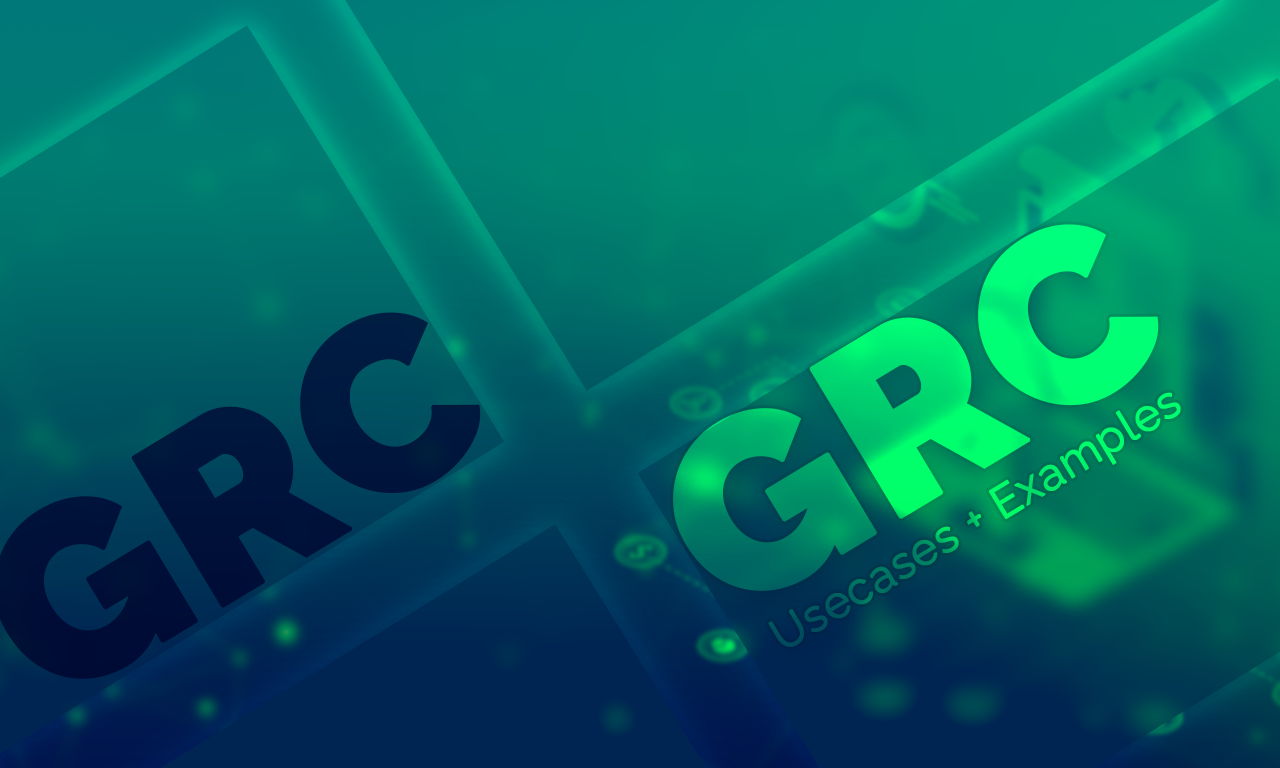ServiceNow GRC (Governance, Risk, and Compliance), also known as ServiceNow IRM (Integrated Risk Management), is a comprehensive platform that helps organizations manage and mitigate risk, ensure compliance with regulatory requirements, and improve overall governance processes. But what is the GRC meaning, and what is its full form in the context of modern business operations? GRC stands for Governance, Risk, and Compliance, encompassing a wide range of tools and practices designed to help organizations navigate complex regulatory landscapes and manage enterprise risk effectively.
The GRC ServiceNow platform, also referred to as IRM ServiceNow, offers a robust GRC system that integrates various aspects of governance and compliance. This GRC platform provides organizations with the tools they need to streamline their governance, risk, and compliance processes.
Here are some common ServiceNow GRC use cases:
Risk Assessment and Management
ServiceNow GRC provides tools and capabilities for identifying, evaluating, and prioritizing risks within an organization. It also helps organizations develop and implement strategies to mitigate those risks. As a robust risk management platform, ServiceNow GRC enables businesses to:
- Conduct comprehensive risk assessments
- Implement risk scoring methodologies
- Develop and track key risk indicators
- Create and manage risk dashboards for real-time monitoring
- Utilize risk identification questionnaires for thorough analysis
Compliance Management
ServiceNow GRC helps organizations stay compliant with various regulations and standards, such as SOX, GDPR, and ISO 27001. It provides tools for tracking and documenting compliance efforts, as well as for identifying and addressing any non-compliant areas. The platform’s GRC compliance features include:
- Automated workflows for compliance processes
- Continuous monitoring of regulatory compliance
- Integration with IT GRC frameworks and privacy standards
- Management of third-party risk and compliance
Policy Management
ServiceNow GRC allows organizations to create, manage, and enforce policies and procedures across the enterprise. It also provides tools for tracking policy awareness and compliance, as well as for conducting audits and assessments. Key features include:
- Centralized policy repository
- Automated policy distribution and acknowledgment
- Integration with existing policy requirements and DevOps policies
- Audit management capabilities
Governance, Risk, and Compliance Reporting
ServiceNow GRC provides dashboards and reports that help organizations understand their risk and compliance posture, identify trends and patterns, and track progress over time. The platform’s reporting capabilities include:
- Customizable risk dashboards
- Real-time compliance status reports
- Integration with CMDB (Configuration Management Database) for asset-based reporting
- Automated report generation and distribution
Incident Management
ServiceNow GRC includes tools for managing incidents and breaches, including the ability to track and resolve incidents, perform root cause analysis, and communicate with stakeholders. The incident management features encompass:
- Automated incident response workflows
- Integration with security operations
- Vulnerability response tracking
- Root cause analysis tools
Overall, ServiceNow GRC is a powerful platform that helps organizations manage risk, ensure compliance, and improve governance processes. Its wide range of GRC tools and capabilities make it a valuable resource for any organization looking to strengthen its risk and compliance management efforts.
Real-time Examples of ServiceNow GRC Use in Different Industries
Here are some real-time examples of how organizations might use ServiceNow Governance, Risk, and Compliance (GRC):
- A healthcare organization might use ServiceNow GRC to manage and mitigate risks related to patient privacy and data security. For example, it could use the platform to track and document compliance with HIPAA regulations, monitor access to patient records, and identify and address any security vulnerabilities in its systems.
- A financial institution might use ServiceNow GRC to ensure compliance with regulations such as SOX and Basel III. For example, it could use the platform to track and document its internal controls, conduct risk assessments, and monitor compliance with policies and procedures, all while maintaining a robust IT risk management program.
- A retail company might use ServiceNow GRC to manage risks related to supply chain and vendor management. For example, it could use the platform to assess the risks associated with different vendors, monitor vendor compliance with company policies, and track the status of vendor audits and assessments as part of its third-party risk management strategy.
- A government agency might use ServiceNow GRC to manage risks related to information security and data privacy. For example, it could use the platform to track and document compliance with various regulations, such as the GDPR and the Cybersecurity Act, and to identify and address any vulnerabilities in its systems, supporting its overall IT GRC efforts.
- An energy company might use ServiceNow GRC to manage risks related to environmental compliance and sustainability. For example, it could use the platform to track and document its environmental performance, monitor compliance with regulations, and identify and address any areas of non-compliance, while also incorporating business continuity planning and disaster recovery strategies.
How ServiceNow GRC Helps Today’s Businesses Manage Risk
ServiceNow Governance, Risk, and Compliance (GRC) can help businesses in several ways:
- Risk Management: ServiceNow GRC provides tools and capabilities for identifying, evaluating, and prioritizing risks within an organization. It also helps organizations develop and implement strategies to mitigate those risks, which can help protect the business from potential negative impacts such as financial losses, reputational damage, and regulatory penalties.
- Compliance Management: ServiceNow GRC helps businesses stay compliant with various regulations and standards, such as SOX, GDPR, and ISO 27001. By using the platform to track and document compliance efforts, businesses can avoid costly fines and penalties and maintain a positive reputation with stakeholders.
- Policy Management: ServiceNow GRC allows businesses to create, manage, and enforce policies and procedures across the enterprise. This can help ensure consistency and alignment across departments and business units, which can improve overall efficiency and effectiveness.
- Governance, Risk, and Compliance Reporting: ServiceNow GRC provides dashboards and reports that help businesses understand their risk and compliance posture, identify trends and patterns, and track progress over time. This can help organizations make informed decisions and take proactive steps to manage risk and compliance.
- Incident Management: ServiceNow GRC includes tools for managing incidents and breaches, including the ability to track and resolve incidents, perform root cause analysis, and communicate with stakeholders. This can help businesses minimize the impact of incidents and improve their overall risk management capabilities.
- Integrated Risk Program: By leveraging ServiceNow GRC, businesses can establish an integrated risk program that encompasses all aspects of governance, risk, and compliance management. This holistic approach allows for better coordination between different departments and more effective risk mitigation strategies.
- Automated Workflows: ServiceNow GRC utilizes automated workflows to streamline GRC processes, reducing manual effort and improving efficiency in areas such as policy management, risk assessments, and compliance monitoring.
- Configuration Compliance: The platform helps organizations maintain configuration compliance by integrating with the CMDB (Configuration Management Database) and providing tools to monitor and enforce configuration standards across the IT infrastructure.
Overall, ServiceNow GRC is a valuable resource for businesses looking to strengthen their risk and compliance management efforts and protect their organization from potential negative impacts. By providing a comprehensive set of GRC tools and services, ServiceNow enables businesses to create a robust governance, risk, and compliance framework.
For those interested in implementing or expanding their use of ServiceNow GRC, there are various resources available, including ServiceNow GRC training programs and a detailed ServiceNow GRC implementation guide. These resources can help organizations maximize the benefits of the platform and ensure successful adoption across their enterprise.
Additionally, ServiceNow GRC supports the entire application lifecycle, from development to deployment, by incorporating DevOps policies and control frameworks. This ensures that governance, risk, and compliance considerations are integrated throughout the software development and management process, further enhancing an organization’s overall risk management capabilities.



